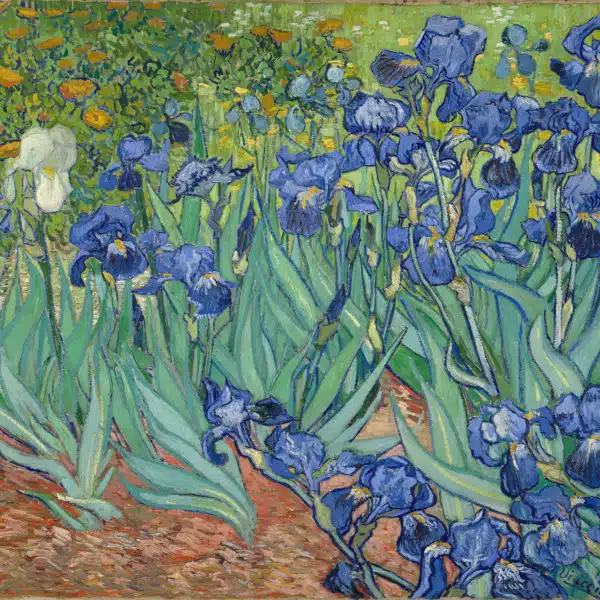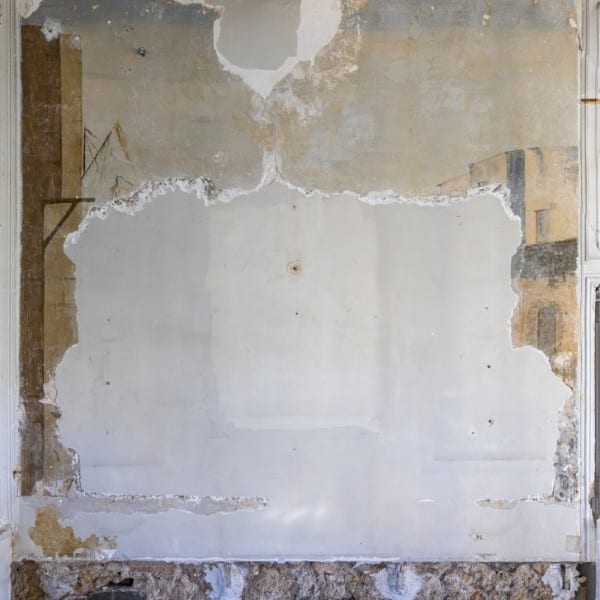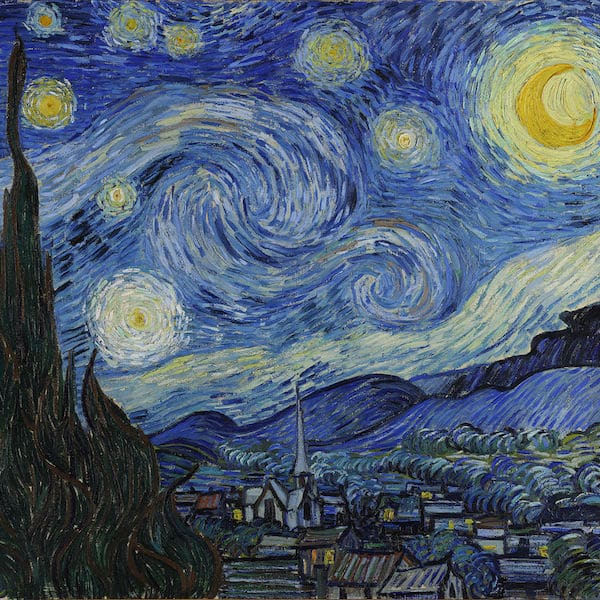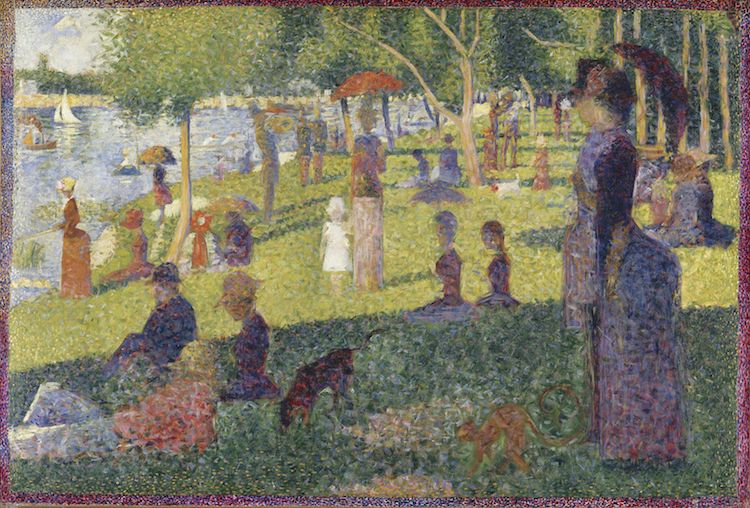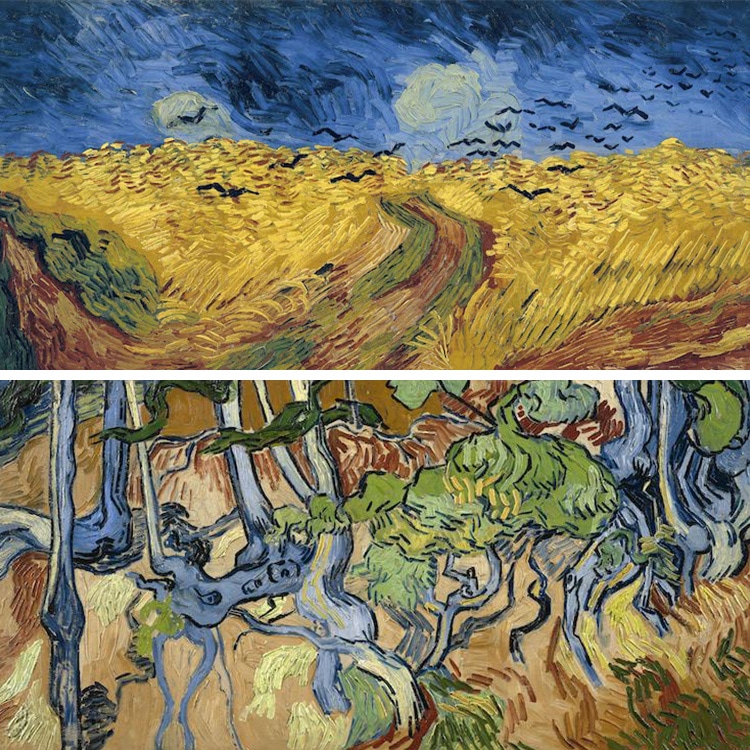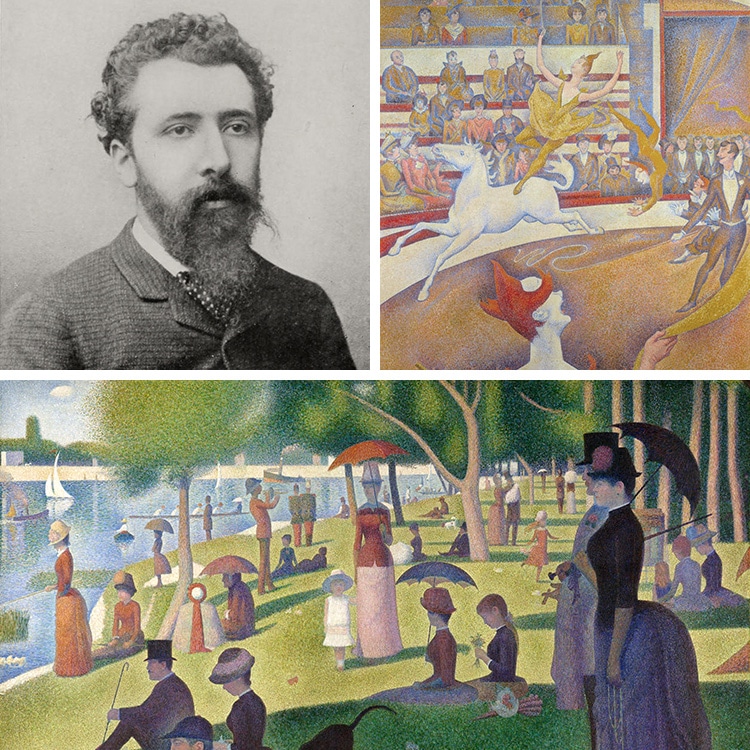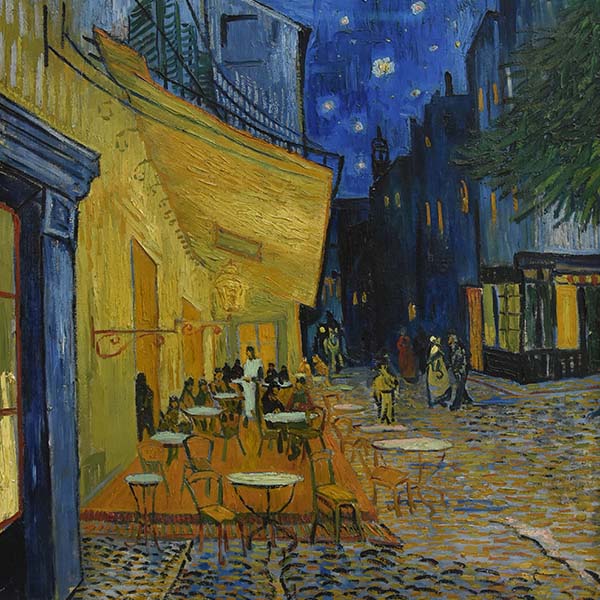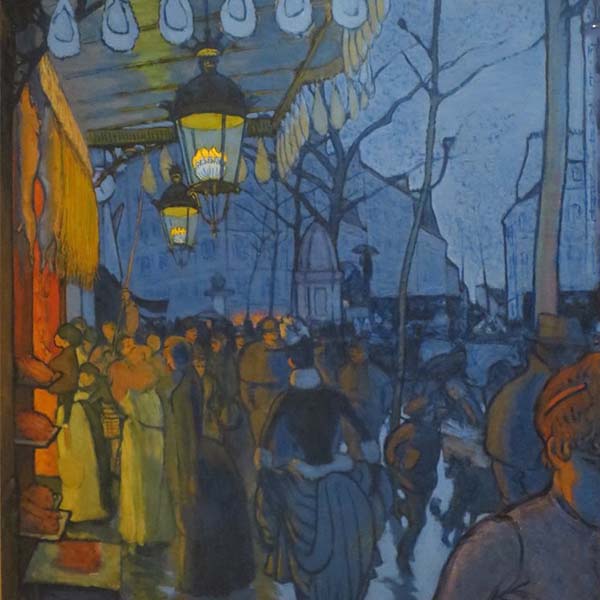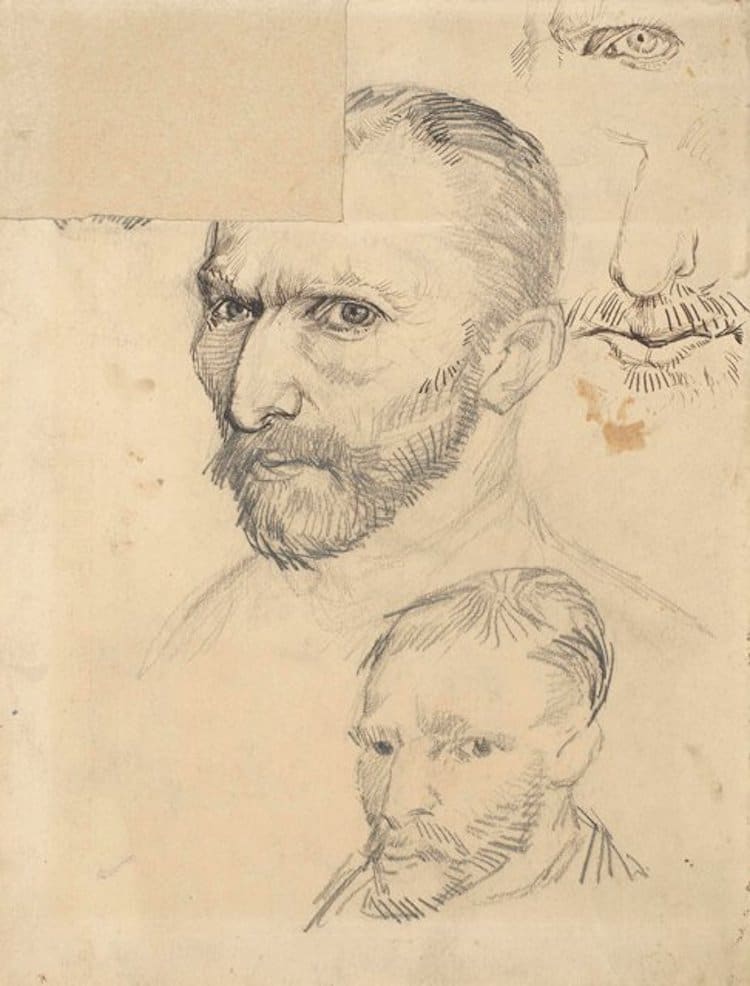
“Self-Portrait, Paris, Autumn 1886″( Photo: Wikimedia Commons Public Domain)
Did you know that Vincent van Gogh‘s artistic career lasted only a decade? This may be surprising, given the Dutch painter's prolific body of work; he completed at least 39 self-portraits alone. In addition to offering us a glimpse of the artist's appearance, these pieces trace the trajectory of his life, from his decision to pursue painting to his tragic battle with mental illness.
Here, we explore 5 of Van Gogh's most significant self-portraits. Though some are more well-known than others, each one illustrates a chapter of the artist's story, helping us piece together one of art history's most important narratives.
These self-portraits by Van Gogh mark some of the artist's most important milestones:
Artistic Emergence
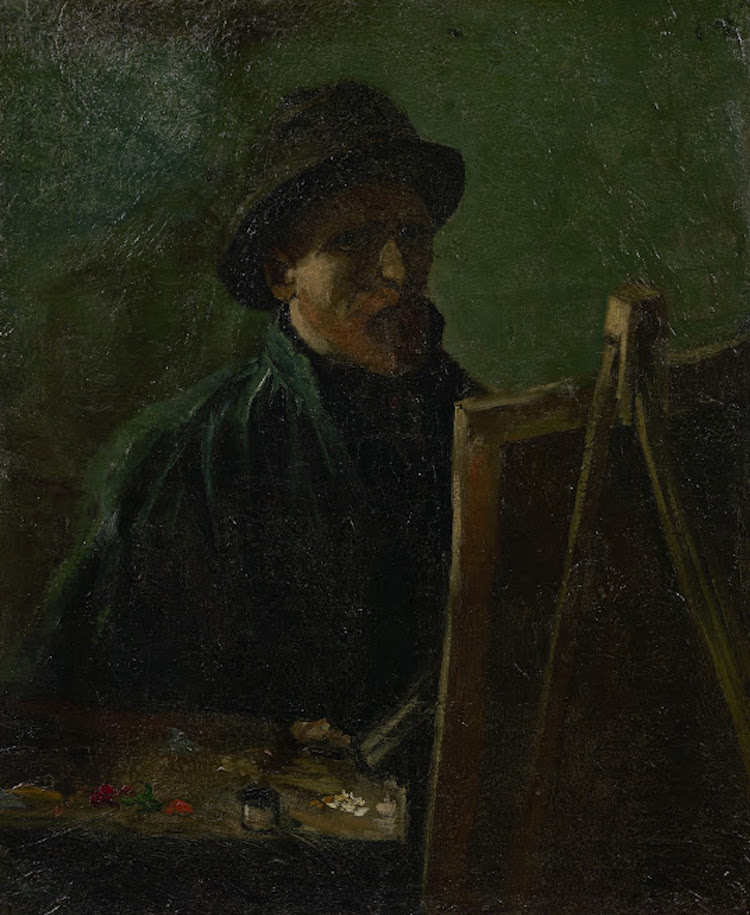
“Self-Portrait as a Painter,” 1886 (Photo: Wikimedia Commons Public Domain)
Vincent van Gogh was born on March 30, 1853, in Zundert, the Netherlands. Though his youth was fairly artistic (as a child, he would occasionally draw, and, by the age of 16, he was working as a clerk at Goupil & Cie, an international art dealer), he did not seriously pursue painting until he was 28 years old. With Dutch realist painter Anton Mauve as his mentor, he began producing “peasant paintings,” a genre characterized by dark color schemes and unidealized subject matter.
This early aesthetic approach is apparent in Self-Portrait as a Painter, a portrayal that depicts Van Gogh holding a painter's palette and standing before an easel. Completed when he was 33 years old and living in Antwerp, this work is not only one of Van Gogh's earliest self-portraits; it is also the first time that he painted himself as an artist, marking an important rite of passage in the late-comer's career.
A Change of Style and Scenery
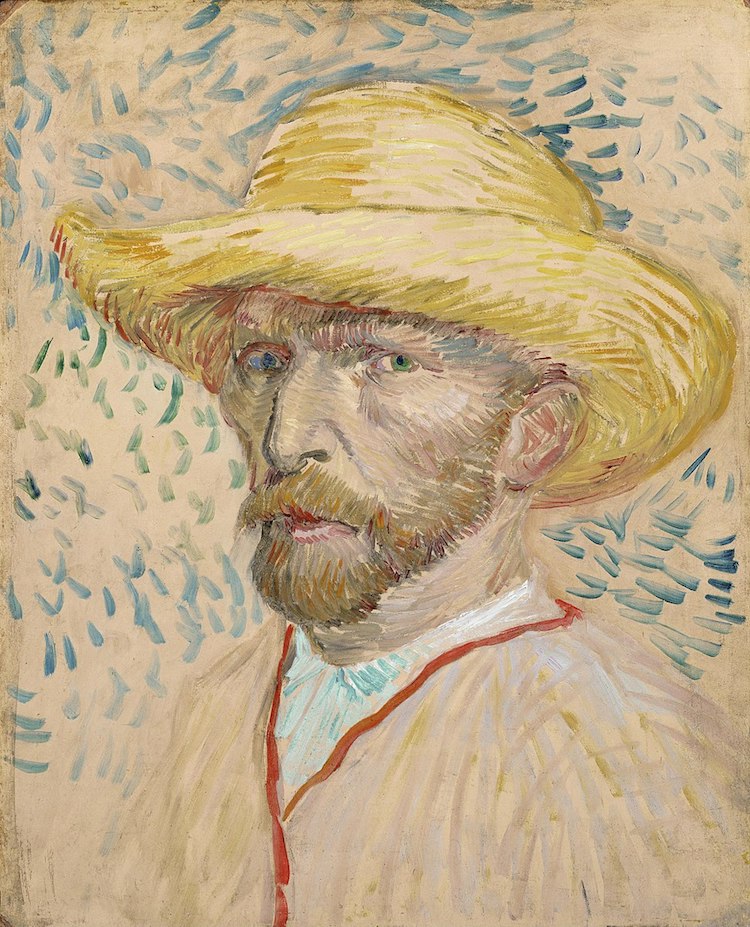
“Self-Portrait with Straw Hat,” 1887 (Photo: Wikimedia Commons Public Domain)
Van Gogh continued to paint in the style of Self-Portrait as a Painter until he came to an unfortunate realization: his “peasant paintings” simply were not selling. Even with the help of his brother, Theo, an esteemed art dealer, he was not able to find buyers. In order to appeal to the public, he decided to follow in the footsteps of other successful artists and move to Paris. During his time in the French capital, he developed a lighter palette and experimented with looser brushwork, as evident in Self-Portrait with Straw Hat.
Unfortunately, Van Gogh's more modern canvases still did not attract clients. After seeing little success, he decided that Paris was not the place for him. “It seems to me almost impossible to be able to work in Paris, unless you have a refuge in which to recover and regain your peace of mind and self-composure,” he wrote to Theo a year after painting Self-Portrait with Straw Hat. “Without that, you’d be bound to get utterly numbed.”
Life-Changing Relationship
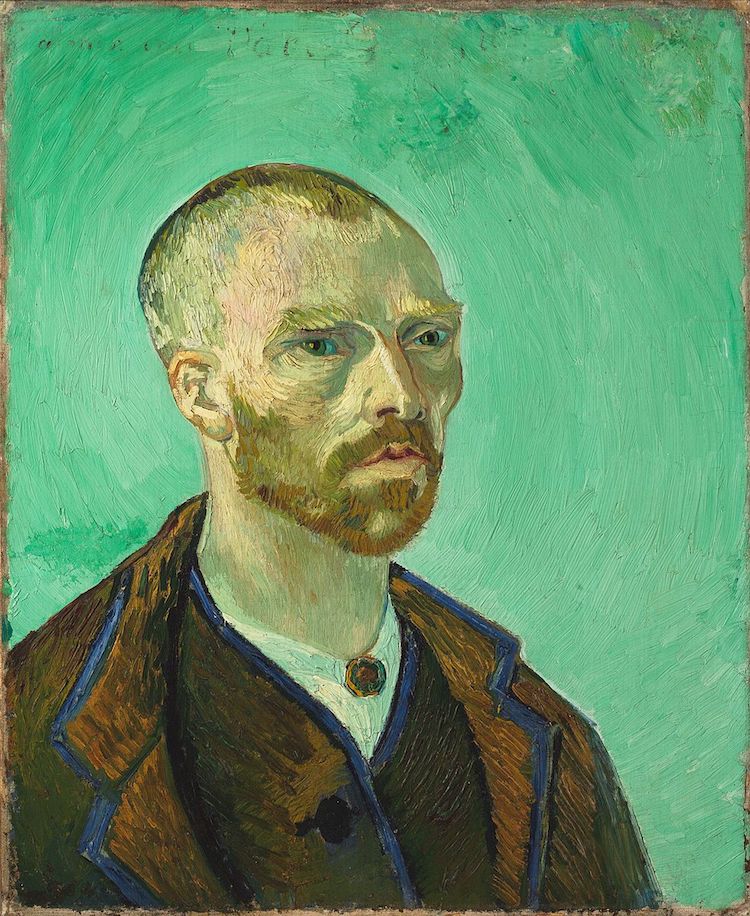
“Self-Portrait (dedicated to Paul Gauguin)” 1888 (Photo: Wikimedia Commons Public Domain)
Van Gogh decided to head south to Arles, a commune in the South of France. Here, he hoped to set up a shared “studio of the south” where he and other artists could live and work. In order to facilitate this dream, he rented several rooms in a block of flats he called the “Yellow House,” and invited Paul Gauguin, his first recruit, to join him.
Gauguin moved into the Yellow House in the fall of 1888. Prior to his relocation, he and Van Gogh swapped self-portraits with one another: Gauguin gifted Van Gogh with Self-Portrait Dedicated to Vincent van Gogh, a piece inspired by Victor Hugo's Les Misérables, and, in return, Van Gogh sent Self-Portrait (dedicated to Paul Gauguin), a piece with a particularly eccentric back story.
“My portrait, which I am sending to Gauguin in exchange, holds its own, I am sure of that,” Van Gogh wrote to Theo in October of 1888. “I have written to Gauguin in reply to his letter that if I might be allowed to stress my own personality in a portrait, I had done so in trying to convey in my portrait not only myself but an impressionist in general, had conceived it as the portrait of a bonze, a simple worshiper of the eternal Buddha.”
Mental Decline
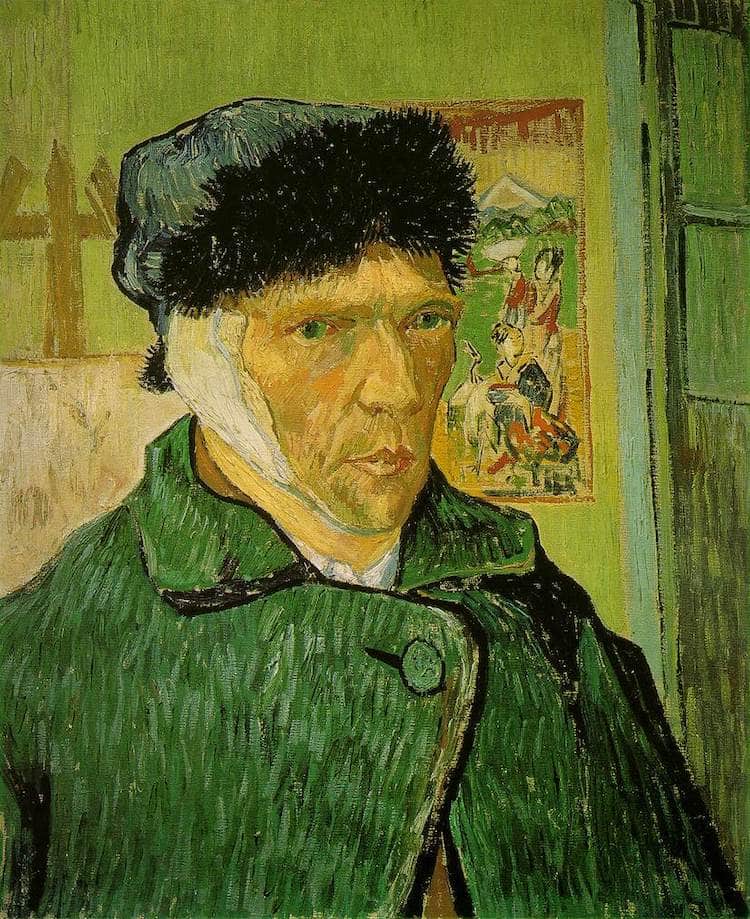
“Self-Portrait With a Bandaged Ear,' 1889 (Photo: Wikimedia Commons Public Domain)
Shortly after this painting swap, Gauguin moved into the Yellow House. Immediately, however, the pair began to butt heads, prompting Gauguin to move out after just two months. When Gauguin broke the news to his housemate, Van Gogh—whose mental health was deteriorating—was so distraught that he cut off part of his own ear. The next morning, he was admitted to a hospital in Arles, where his self-inflicted injury was treated.
Upon returning to the Yellow House a few days later, he painted Self-Portrait With a Bandaged Ear. Arguably one of Van Gogh's most well-known works, this painting prominently features Van Gogh's thick, energetic brushwork, illustrates his interest in Japanese art, and, poignantly, presents the artist's covered wound.
While Van Gogh appeared to be relatively stable after the ordeal (“this over-excitement was only fleeting,” his doctor, Félix Rey, assured Theo in a letter prior to Van Gogh's release), he recognized that his condition continued to worsen. In the spring of 1889, he voluntarily checked himself into a mental health facility in Saint-Rémy-de-Provence, a nearby commune.
Tragic Psychosis
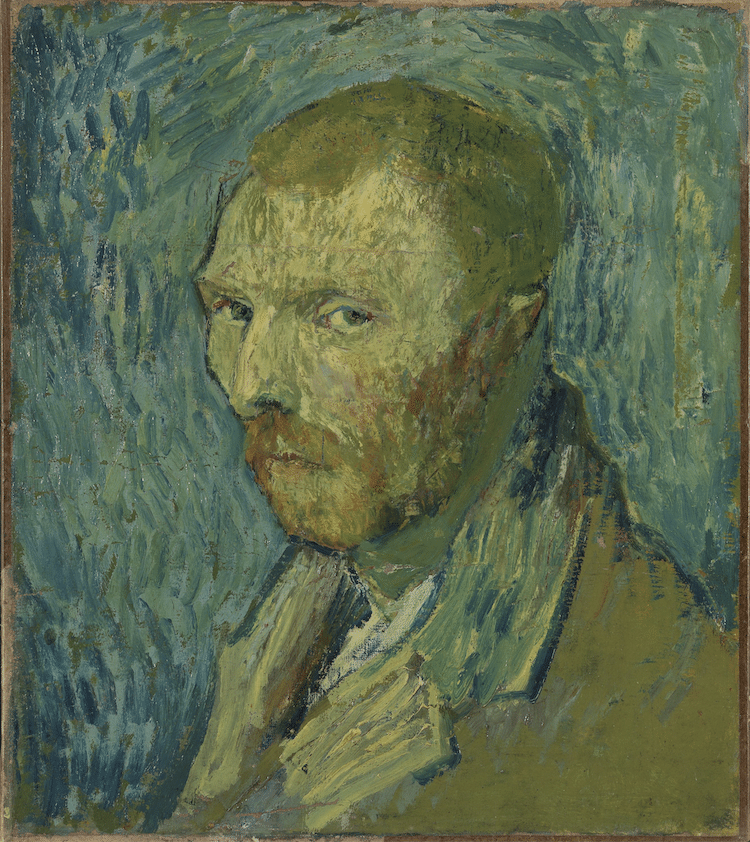
“Self-Portrait,” 1889 (Photo: Nasjonalmuseet CC-BY-NC)
Van Gogh continued to paint while being treated. After converting an extra hospital room into an artist’s studio, he completed 150 paintings, including The Starry Night, Vase with Irises, and his most tragic Self-Portrait.
Van Gogh created this recently authenticated painting while in the midst of a breakdown in late summer of 1889. Described by the artist as “an attempt from when I was ill,” the self-portrait illustrates an important point in the final years of Van Gogh's life: a sense of self-acceptance. “He probably painted this portrait to reconcile himself with what he saw in the mirror: a person he did not wish to be, yet was,” Louis van Tilborgh, the senior researcher at the Van Gogh Museum, says. “This is part of what makes the painting so remarkable and even therapeutic. It is the only work that Van Gogh is known for certain to have created while suffering from psychosis.”
Less than a year after painting this self-portrait, Van Gogh was released from the hospital. He moved to Auvers-sur-Oise, a suburb of Paris, where he shot himself in a wheat field. Two days later, on July 29, 1890, he succumbed to his injuries. He was just 37 years old.
Related Articles:
20 Inspiring Van Gogh Quotes to Keep You Motivated to Create
Iconic Artists Who Have Immortalized Themselves Through Famous Self-Portraits
Evolution of Picasso’s Iconic Self-Portraits From Age 15 to 90











































































